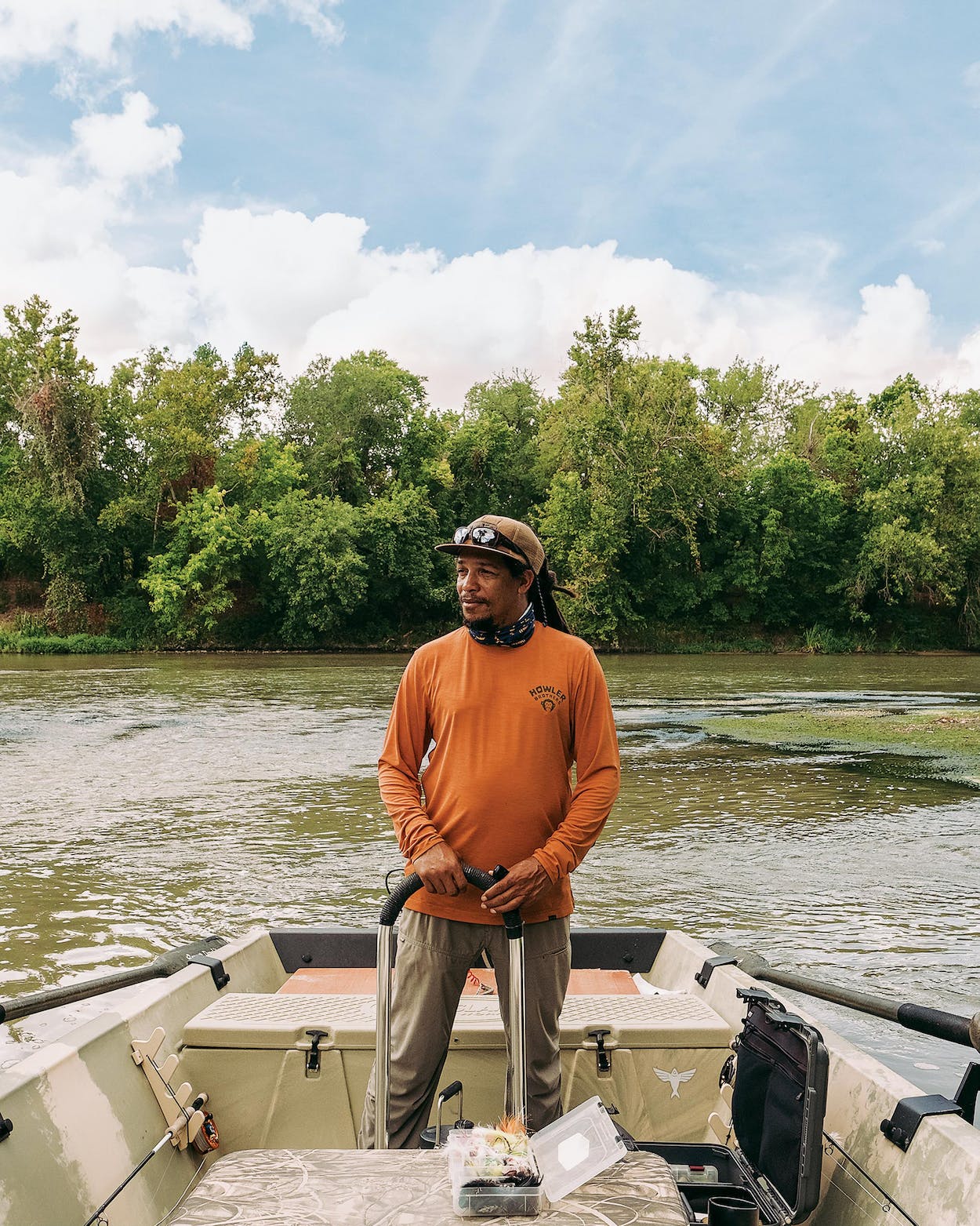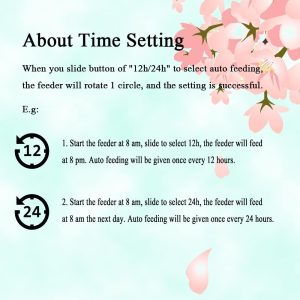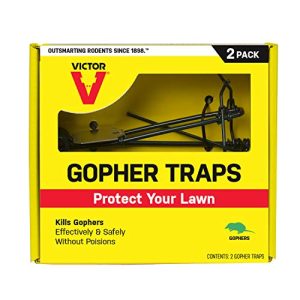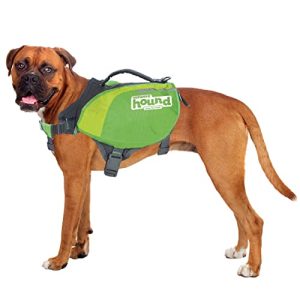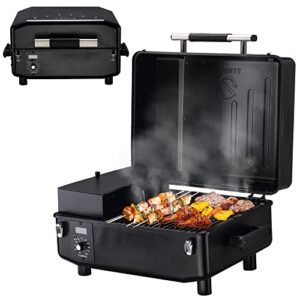Contents
A fly fishing Jon boat is a small, maneuverable watercraft specifically designed for fly fishing. It is perfect for anglers who want to fish in calm waters and navigate shallow areas with ease.
Whether you are a beginner or an experienced angler, using a fly fishing Jon boat can enhance your fishing experience and give you access to hard-to-reach fishing spots. With its flat bottom and stable design, this type of boat allows for stand-up casting and offers ample space for gear and equipment.
If you are looking for a versatile and efficient way to enjoy fly fishing, a fly fishing Jon boat is an excellent option.
Choosing The Right Jon Boat
Choosing the right Jon boat for fly fishing requires careful consideration of factors such as size, stability, and maneuverability. Opt for a boat that suits your needs, allowing for a great fishing experience on the water.
When it comes to fly fishing, having the right jon boat can make all the difference in your angling experience. A well-chosen jon boat can provide stability, maneuverability, and the perfect platform for casting your line. However, with so many options available in the market, how do you choose the right jon boat for your fly fishing needs?
Here are some factors to consider:
Factors To Consider When Selecting A Jon Boat:
- Purpose: Determine your specific needs and preferences. Are you planning to use the jon boat solely for fly fishing or do you also want to use it for recreational boating? Knowing the purpose will help narrow down your options.
- Material: Understanding the different materials available for jon boats is crucial. Each material comes with its own set of pros and cons. Some common materials are aluminum, fiberglass, and wood. Consider the durability, weight, and maintenance required for each material.
- Size and Weight Capacity: The size and weight capacity of a jon boat play a vital role in its performance. Consider the number of passengers you plan on having and the amount of gear you’ll be carrying. Ensure that the jon boat you choose can comfortably accommodate your needs without compromising its stability.
- Stability: Fly fishing often requires standing up on the boat, so stability is one of the key factors to consider. Look for a jon boat that has a flat bottom or a modified V-hull design. These designs offer better stability and prevent tipping while you’re focusing on your cast.
- Maneuverability: Fly fishing in tight spaces or navigating through narrow waterways requires a jon boat that is easily maneuverable. Look for a boat with a shallow draft and preferably one that is lightweight. This will make it easier for you to navigate through shallow waters and tight corners.
- Storage Options: Consider the storage options available in the jon boat. Fly fishing requires you to carry different types of gear and equipment. Look for additional storage compartments or a layout that allows for the storage of fly boxes, rods, reels, and other essential items.
Understanding The Different Materials Available:
- Aluminum: Lightweight and durable, aluminum jon boats are a popular choice among anglers. They are resistant to rust and corrosion, making them low-maintenance. However, they can dent easily and may be prone to heat and cold transfers.
- Fiberglass: Fiberglass jon boats offer a smooth ride and are known for their sleek design. They are generally strong and provide good stability. However, they can be more expensive than aluminum and may require more maintenance.
- Wood: Traditional and aesthetically pleasing, wooden jon boats have their charm. They provide excellent stability and a classic look. However, they require regular maintenance, including sealing and varnishing, to prevent rot and deterioration.
Comparing Different Sizes And Weight Capacities Of Jon Boats:
- 10-12 feet: Compact and easy to transport, small jon boats are ideal for solo anglers or those who prefer fishing alone. They are lightweight, making them easy to handle and maneuver. However, they may have limited weight capacity and may not be suitable for carrying larger gear or additional passengers.
- 14-16 feet: Mid-sized jon boats offer a good balance between stability and maneuverability. They can accommodate a small group of anglers and provide enough space for gear and equipment. These boats are versatile and can be suitable for both solo and group fly fishing trips.
- 18-20 feet: Large jon boats are designed for anglers who require more space and have higher weight capacity needs. They are typically stable and can accommodate multiple passengers comfortably. However, they may be more challenging to maneuver in tight spaces.
Choosing the right jon boat for your fly fishing adventures is essential to ensure a successful and enjoyable experience. Consider these factors and do thorough research before making your final decision. Once you have the right jon boat, you’ll be ready to embark on countless fly fishing adventures in style.
Essential Gear For Fly Fishing On A Jon Boat
Gear up for a successful fly fishing experience on a Jon boat with these essential tools and equipment. Enhance your angling skills with the right gear, including fly rods, reels, lines, waders, and tackle boxes, ensuring a rewarding fishing trip.
For avid anglers, fly fishing on a Jon boat offers a unique and thrilling experience. To make the most of your time on the water, it’s crucial to have the right fishing gear and accessories. Here are the essential items you need to ensure a successful and enjoyable fly fishing adventure:
Rods, Reels, And Lines Suitable For Fly Fishing:
- A 9 to 10 foot fly fishing rod: This length provides the ideal balance between accurate casting and control.
- A fly reel with a smooth drag system: Look for reels that can handle the weight of fish commonly found in the waters you’ll be fishing in.
- Weight forward or double taper fly lines: These types of lines offer excellent casting distance and accuracy, making your fly presentation more enticing to fish.
Must-Have Tackle And Bait For Successful Angling:
- Fly assortment: Carry a variety of flies, including nymphs, dry flies, and streamers, to match the insects and baitfish present in the water.
- Strike indicators: These small, buoyant devices notify you when a fish takes the fly underwater, allowing for timely hook sets.
- Leader and tippet material: Choose the appropriate leader and tippet sizes based on the fishing conditions and the fish species you’re targeting.
Safety Equipment And Accessories For A Comfortable Fishing Experience:
- Personal flotation device (PFD): Ensure your safety on the water by wearing a comfortable PFD that fits snugly.
- Sun protection gear: Shield yourself from the sun’s harmful rays by wearing a wide-brimmed hat, sunglasses, and sunscreen.
- Waterproof gear bag: Keep your valuables and fishing equipment dry by storing them in a waterproof bag or container.
By having the right equipment and accessories, you can maximize your chances of landing the fish of a lifetime while enjoying a safe and comfortable fly fishing experience on your Jon boat. Remember to always check local regulations and acquire the necessary fishing licenses before embarking on your angling adventures.
Navigating And Maneuvering On A Jon Boat
Navigate through the waters with ease on a Jon Boat designed specifically for fly fishing. Maneuvering becomes effortless, allowing you to reach the perfect fishing spots effortlessly.
Understanding The Basics Of Boat Navigation
Navigating and maneuvering on a Jon Boat can be an exhilarating experience, but it requires a basic understanding of boat navigation. To maximize your enjoyment and stay safe on the water, here are some key points to keep in mind:
- Properly distribute weight: Distribute weight evenly in your Jon Boat to ensure stability and balanced navigation. This will prevent the boat from tilting and help you maintain control.
- Become familiar with navigation markers: Familiarize yourself with the various markers used in boating, such as channel markers, buoys, and navigational aids. Understanding their meanings will help you navigate through unfamiliar waters with ease.
- Use maps or GPS: Utilize navigational aids such as maps or GPS devices to plan your routes and avoid getting lost. These tools can also provide valuable information about water depths and potential hazards.
- Know the rules of the water: Familiarize yourself with boating rules and regulations specific to your location. This includes speed limits, right-of-way procedures, and any local restrictions in place. Adhering to these guidelines will not only ensure your safety but also promote a respectful boating community.
Tips For Steering And Controlling A Jon Boat Effectively
Steering and controlling a Jon Boat require finesse and understanding of the boat’s dynamics. Here are some tips to help you master the art of maneuvering:
- Use gradual steering inputs: Instead of making sharp and sudden turns, apply gradual steering inputs to maintain control of your Jon Boat. This will help you avoid sudden jerks and potential loss of balance.
- Utilize both oars: In smaller Jon Boats, using both oars simultaneously can provide better steering control. This technique is especially useful when facing strong currents or winds.
- Watch your speed: Controlling your speed is crucial when maneuvering a Jon Boat. Traveling too fast can make it difficult to navigate and increase the risk of collisions with obstacles or other watercraft.
- Adjust trim and tilt: Experiment with the boat’s trim and tilt settings to find the optimal position for steering and controlling your Jon Boat. Properly adjusting these settings can improve stability and maneuverability.
Maneuvering Through Different Water Conditions And Obstacles
As you navigate your Jon Boat, you’ll encounter various water conditions and obstacles that require careful maneuvering. Here are some strategies to help you navigate through different scenarios:
- Windy conditions: When faced with strong winds, it’s important to anticipate their effects on your Jon Boat. Maintain a lower speed, steer into the wind, and adjust your course as needed to avoid being blown off course or losing control.
- Shallow water: In shallow water, be mindful of the boat’s draft and potential obstructions beneath the surface. Slow down your speed to reduce the risk of grounding and use visual cues, such as ripples or discoloration, to identify shallow areas.
- Narrow passages: When navigating through narrow passages, take it slow and exercise caution. Keep a steady hand on the tiller or steering mechanism, and use short, controlled strokes to steer your Jon Boat through tight spaces.
- Obstacles and hazards: Be vigilant for obstacles such as rocks, stumps, or submerged branches that can damage your Jon Boat. Maintain a safe distance and maneuver around them with calculated and decisive actions.
Remember, practice makes perfect when it comes to boat navigation and maneuvering. Spend time familiarizing yourself with your Jon Boat’s handling characteristics, and always prioritize safety while exploring the waters. Happy fishing!
Mastering Casting Techniques From A Jon Boat
Discover the art of mastering casting techniques for fly fishing from a Jon boat, the perfect vessel for navigating small and shallow waters. Gain valuable insights and tips to enhance your angling experience on the water.
Adjusting Your Casting Technique For A Jon Boat Platform
When it comes to fly fishing from a jon boat, mastering the proper casting techniques is essential. The unique nature of the jon boat platform calls for some adjustments to ensure accurate and effective casts. Here are some key considerations and techniques to help you improve your casting skills from a jon boat:
Key Considerations For Casting In Tight Spaces:
- Limited casting space: Due to the smaller size and narrower deck of a jon boat, it’s important to adapt your casting technique to accommodate the restricted space.
- Mind your backcast: Be conscious of the space behind you while casting to avoid hitting anything or getting your fly caught on nearby objects.
- Shorter strokes: Opt for shorter casting strokes and follow-through to prevent tangling the line in the limited casting area.
- Accuracy over distance: In tight spaces, focus on accurate and precise casts rather than trying to cast long distances.
- Sidecasting: Sidecasting can be a useful technique in tight areas, allowing you to avoid obstacles and present the fly effectively.
Casting Techniques For Different Fishing Scenarios:
- Open water casting: When you have ample space around your jon boat, utilize your regular casting techniques such as overhead casts or roll casts for longer distances.
- Dock and structure casting: When fishing near docks or other structures, mastering the technique of pitching the fly accurately under low-hanging obstacles is crucial. Practice vertical casts and sidearm casts to place the fly close to the target.
- Vegetation casting: In areas with dense vegetation or overhanging branches, an underhand or bow-and-arrow cast can help you place your fly where the fish are hiding without getting tangled in the vegetation.
- Obstacle casting: Whether it’s trees, stumps, or rocks, learning how to make accurate target casts to navigate around obstacles is vital. Utilize sidecasting or make low casts to keep your fly away from potential snags while still presenting it effectively to the fish.
Remember, practice makes perfect, so take the time to refine your casting techniques from a jon boat. Adjusting your casting style to suit the unique challenges of the jon boat platform will greatly improve your chances of success on the water.
Happy fishing!
Optimizing Your Fly Fishing Experience On A Jon Boat
Maximize your fly fishing experience on a Jon Boat by following these expert tips. Enhance your technique and make the most of your time on the water.
Positioning yourself for optimal casting and angling:
- Sit in the middle: Position yourself in the center of the jon boat to evenly distribute your weight, ensuring stability and reducing the risk of capsizing.
- Face the bow: Orient yourself towards the front of the boat, providing better visibility and control over your casting.
- Stand when necessary: If you need more leverage for casting or spotting fish, stand up carefully to maintain balance and control.
Strategies for finding fish and choosing the right fishing spot:
- Observe the water: Look for signs of fish activity like splashing, jumping, or ripples on the surface.
- Target structure: Fish tend to seek cover near structures such as fallen trees, rocks, or vegetation. Focus your efforts around these areas.
- Consider water depth: Different fish species have different depth preferences. Adjust your fishing spot based on the species you’re targeting.
- Pay attention to currents: Fish often congregate in areas where there is a noticeable current. Look for features like eddies or seams where the current breaks.
Techniques for catching different species of fish on a jon boat:
- Trout fishing: Use dry flies, nymphs, or streamers depending on the trout’s feeding behavior and the conditions of the water.
- Bass fishing: Try topwater lures, soft plastics, or crankbaits to entice bass hiding in shallow structures. Experiment with retrieval speeds and depths to find what works best.
- Panfish fishing: Utilize light tackle with small hooks and bait such as worms, insects, or small jigs. Cast near submerged vegetation or around docks.
- Catfish fishing: Use stink baits, cut baits, or live baits like nightcrawlers or minnows. Target areas with deeper water, submerged logs, or areas with slower currents.
Remember, optimizing your fly fishing experience on a jon boat comes down to positioning yourself correctly, finding the right fishing spot, and using appropriate techniques for different fish species. So grab your gear, hop on your boat, and enjoy the thrill of fly fishing in the great outdoors!

Credit: www.flyfisherman.com
Frequently Asked Questions Of Fly Fishing Jon Boat
What Is A Jon Boat And Why Is It Popular For Fly Fishing?
A Jon Boat is a flat-bottomed boat known for its stability and versatility, making it an ideal choice for fly fishing. Its wide-open space allows anglers to cast their lines with ease, while its shallow draft enables navigation in shallow waters.
Its popularity in fly fishing stems from its affordability, durability, and accessibility in various fishing environments.
How Is A Jon Boat Different From Other Fishing Boats?
Unlike traditional fishing boats, a Jon Boat has a flat bottom, which provides exceptional stability and enables fishing in shallow waters. Its simplicity and lightweight design make it easy to transport and launch, while its affordability makes it a popular choice among anglers.
Additionally, Jon Boats often lack built-in features like livewells and cabin space, focusing solely on the fishing experience.
What Are The Advantages Of Using A Jon Boat For Fly Fishing?
Using a Jon Boat for fly fishing offers several advantages. Its stability allows anglers to stand and cast their lines without worrying about tipping over. Its shallow draft allows access to tight fishing spots that are inaccessible to larger boats.
It is also more affordable compared to other types of fishing boats, making it accessible to anglers of all budgets.
Is A Jon Boat Suitable For Fly Fishing In Rivers And Lakes?
Yes, a Jon Boat is well-suited for fly fishing in rivers and lakes. Its flat bottom provides stability, while the shallow draft allows access to narrow river channels and shallow lake areas. Additionally, its lightweight design makes it easy to transport to different fishing locations and launch it from various ramps or even directly from the shore.
Conclusion
Fly fishing from a Jon boat opens up a world of possibilities for avid anglers. The versatility and maneuverability of these boats make it easier to access hard-to-reach fishing spots and navigate around obstacles like rocks and shallow waters. Whether you prefer calm rivers or challenging rapids, a Jon boat can handle it all.
With the right gear and technique, you can enjoy a fulfilling fly fishing experience while surrounded by nature’s beauty. Don’t forget to prioritize safety and follow local regulations to ensure a responsible and sustainable fishing adventure. So, if you’re looking to take your fly fishing to the next level, consider investing in a Jon boat and embark on exciting fishing expeditions that will create lasting memories.
{ “@context”: “https://schema.org”, “@type”: “FAQPage”, “mainEntity”: [ { “@type”: “Question”, “name”: “What is a Jon Boat and why is it popular for fly fishing?”, “acceptedAnswer”: { “@type”: “Answer”, “text”: “A Jon Boat is a flat-bottomed boat known for its stability and versatility, making it an ideal choice for fly fishing. Its wide-open space allows anglers to cast their lines with ease, while its shallow draft enables navigation in shallow waters. Its popularity in fly fishing stems from its affordability, durability, and accessibility in various fishing environments.” } } , { “@type”: “Question”, “name”: “How is a Jon Boat different from other fishing boats?”, “acceptedAnswer”: { “@type”: “Answer”, “text”: “Unlike traditional fishing boats, a Jon Boat has a flat bottom, which provides exceptional stability and enables fishing in shallow waters. Its simplicity and lightweight design make it easy to transport and launch, while its affordability makes it a popular choice among anglers. Additionally, Jon Boats often lack built-in features like livewells and cabin space, focusing solely on the fishing experience.” } } , { “@type”: “Question”, “name”: “What are the advantages of using a Jon Boat for fly fishing?”, “acceptedAnswer”: { “@type”: “Answer”, “text”: “Using a Jon Boat for fly fishing offers several advantages. Its stability allows anglers to stand and cast their lines without worrying about tipping over. Its shallow draft allows access to tight fishing spots that are inaccessible to larger boats. It is also more affordable compared to other types of fishing boats, making it accessible to anglers of all budgets.” } } , { “@type”: “Question”, “name”: “Is a Jon Boat suitable for fly fishing in rivers and lakes?”, “acceptedAnswer”: { “@type”: “Answer”, “text”: “Yes, a Jon Boat is well-suited for fly fishing in rivers and lakes. Its flat bottom provides stability, while the shallow draft allows access to narrow river channels and shallow lake areas. Additionally, its lightweight design makes it easy to transport to different fishing locations and launch it from various ramps or even directly from the shore.” } } ] }
